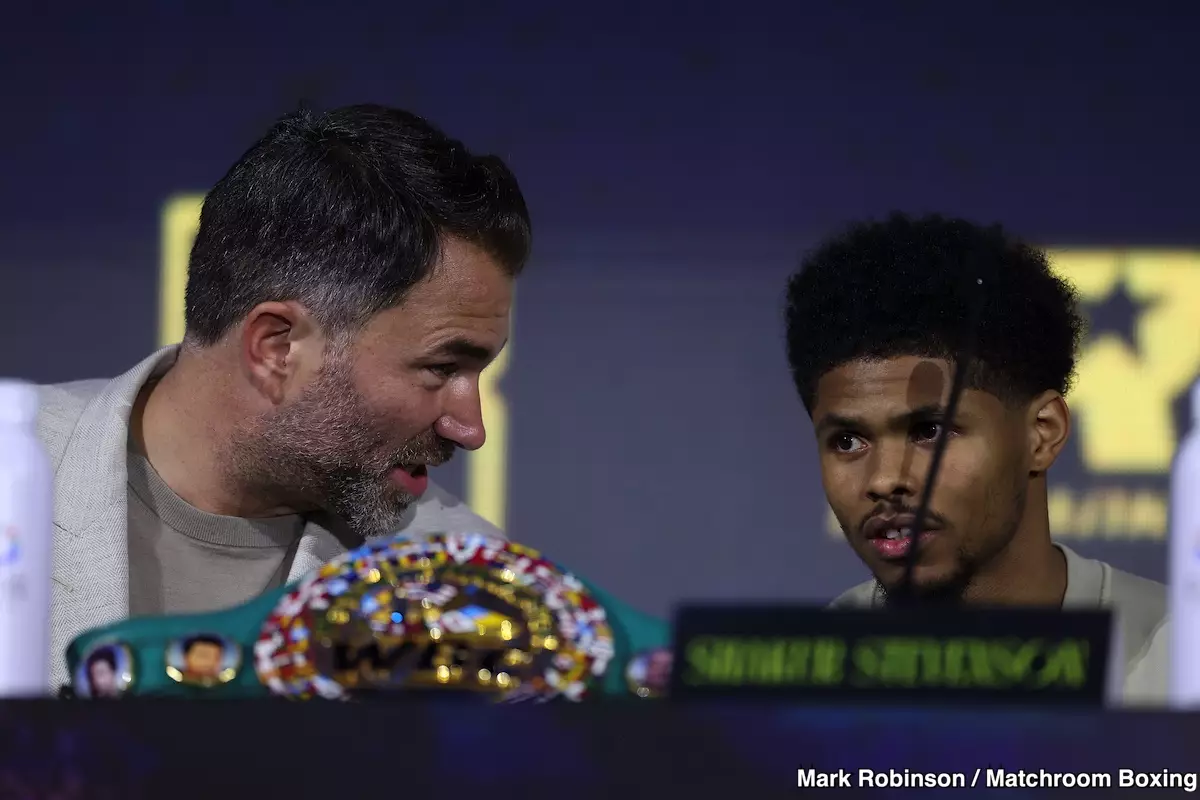In the world of boxing, comparisons often lead to heated debates—sometimes galvanizing support, other times igniting ire. Such was the case when Eddie Hearn lauded Shakur Stevenson, proclaiming him akin to the legendary Sugar Ray Leonard during a press conference before Stevenson’s upcoming fight against Josh Padley, set to take place on February 22nd in Riyadh. However, while Hearn’s intent may have been to elevate Stevenson’s stature, many fans and experts believe this comparison is misguided and overlooks the true essence of what made Leonard a compelling figure in the sport.
One of the primary issues with Hearn’s assessment is the stark contrast between the achievements of Leonard and those of Stevenson. Leonard, a two-time hall-of-famer, faced and triumphed over numerous elite opponents during his career, including iconic names such as Roberto Duran and Marvin Hagler. By the age of 27, Leonard had already secured multiple titles in various weight classes and had engaged in several high-profile bouts that enthralled boxing fans worldwide. In stark contrast, Stevenson, with a record of 22-0 (10 KOs), has yet to demonstrate that level of competitiveness against similarly ranked opponents.
The argument could be made that Stevenson is still in the early stages of his career; however, as he approaches 28, the question looms: when will he step up to challenges that define greatness? If he truly aspires to reach the heights of boxing legend, the ability to adapt, take risks, and face high-level competition will be crucial.
A further disconnect arises from the notion of audience engagement. Sugar Ray Leonard not only possessed extraordinary skill but also an undeniable charisma that attracted viewers both in arenas and on television screens. His fights were not only a showcase of technical brilliance but were also imbued with drama and excitement. Fans remember the thrill of his bouts—every punch was a potential turning point, every round a gripping narrative unfolding in real-time.
In contrast, some argue that Stevenson’s recent performances lack the same electrifying quality, rendering them somewhat subdued and less engaging. While it is essential to acknowledge Stevenson’s technical ability—a gift that cannot be overlooked—it prompts a deeper discussion about the entertainer’s plight in boxing. A champion is expected not just to win but to capture the imagination of the audience. In this ongoing landscape of boxing, does Stevenson possess the X-factor needed to elevate him beyond a mere belt-holder status?
Currently, Stevenson is scheduled to defend his WBC lightweight title against Josh Padley, who recently stepped in as a late replacement for Floyd Schofield due to illness. Such circumstances raise further questions on Stevenson’s career trajectory and choice of opponents. If Hearn’s assertions about Stevenson’s greatness ring true, it becomes more difficult to reconcile why he is continually engaging with less-known competitors that many believe lack the required pedigree.
Boxing aficionados are not merely concerned with a fighter’s record but also the caliber of opposition faced. Lesser opponents lead to an incomplete view of a fighter’s potential. To stake a genuine claim to comparisons with the greats of past eras, like Leonard, it is imperative for Stevenson to broaden his horizons and challenge himself against top-tier competition that will better define and solidify his legacy.
While Eddie Hearn’s appreciation for Shakur Stevenson is evident, the comparisons to Sugar Ray Leonard come with complexities that cannot be ignored. The path of greatness in boxing is paved not only with skill but also with the ability to inspire and energize audiences through memorable bouts against formidable opponents. Stevenson still has ample time to craft his narrative, but the clock is ticking; the community is watching closely, eager to see if he can prove that he is more than just a simple belt-holder. To earn a place among the legends, Stevenson must recognize that true greatness demands more than potential—it requires the willingness to engage in memorable and challenging battles.

